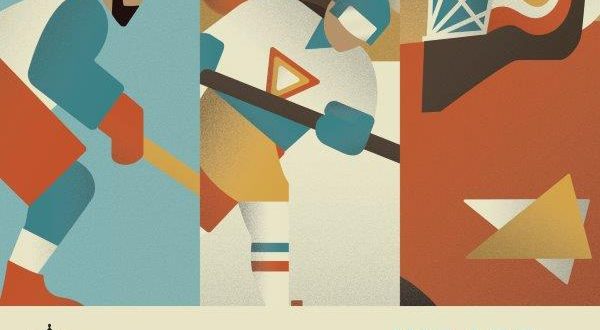By Sharanjit Kaur Sandhra
‘We Are Hockey’ an interesting exhibit questioning singularly racial perspectives on the meaning of Hockey as Canada’s national sport kicks off in March, 2019
There is a unique Sikh place of worship on South Fraser Way in Abbotsford, BC called The Gur Sikh Gurdwara (temple), designated as a National Historic Site by Prime Minister Jean Chretien on July 31, 2002. A hundred year old Sikh religious institution, built by struggling settlers (started in 1908).
During the Centennial year celebrations of the National Historic Site, in 2011, the ground floor of the Gur Sikh Temple was re-designed to become the Sikh Heritage Museum. A three way partnership was fostered between the South Asian Studies Institute at UFV, the Reach Gallery Museum Abbotsford and the Khalsa Diwan Society, Abbotsford.
Since 2011 we have curated ten exhibits at the Sikh Heritage Museum. Our 11th official exhibit, ‘We Are Hockey’ is something we are particularly excited about.
The idea for the exhibit came about when a PhD student (who has since completed her PhD), Dr. Courtney Szto, approached us with the idea of an exhibit based on her work. Dr. Szto discovered that the peoples of colour who have contributed to the iconic Canadian sport have been relegated to the margins of history. Based on much of Dr. Szto’z research, the SASI hired a UFV graduate from our graphic design program to design a visually stimulating timeline highlighting Canadian of colour only.
As such, the exhibit centres on the experiences of peoples of colour and challenges singularly racial perspectives on the meaning of Hockey as Canada’s national sport while negotiating the often ambivalent, yet very relevant interrogations of race, ethnicity and the privilege and power of settler communities.
Another significant part of the exhibit is a highlighting of Hockey Night Punjabi, which has itself become an integral part to bridging those invisible boundaries of whiteness within the sport of ice hockey. The Punjabi language commentary by Randip Janda and Harnarayan Singh, along with the other great commentators has allowed for intergenerational Punjabi dialogue around the sport.
We are very excited that both Randip Janda and Harnarayan Singh will be joining us at the opening reception to meet and greet with visitors as well as provide a keynote address.
The Vancouver Canucks have also partnered with us and are providing physical materials of Manny Malhotra as they see the value in diversifying the sport and the need to reach out to the South Asian community.
Finally, the exhibit also features a hockey stick installation aligned with images provided by Apna Hockey, a great organization aimed at providing safe space access to the sport by South Asians.
Our deep gratitude to Rogers as our Gold Sponsor with Silver Sponsor CrossConnect Media and Bronze Sponsor the Department of Communications at SFU. The exhibit will also feature a community partnership with the Vancouver Canucks, OMNI TV and Sportsnet.
All are welcome to attend the opening reception on Friday, March 29th, 5PM. If you are not able to make it to the opening, not to worry because the exhibit is available for viewing all year long until March, 2020.
Along with exhibit, the visitors can also feel an important and inseparable part of Sikh History at the Gur Sikh Temple. The temple is a testament to the pride, vision and steadfastness of a settler community at the turn of the last century.
The first Sikhs had arrived in the Fraser Valley in 1905, from Punjab, India and settled in the valley by working on the farms and in the forestry industry. Soon after, in 1908, local Sikhs started to build a Sikh Temple in a true community effort, under the auspices of the Khalsa Diwan Society. It would take the fledgling community four years of hard work and great commitment – both financial and physical – to finish building it.
The project was spearheaded by Sunder Singh Thandi, who along with Arjan Singh purchased a once acre property on a prominent hill adjacent to the mill at Mill Lake where about fifty or so Sikh men worked. These men and others who worked on the farms in the area used to carry local timber donated by the Tretheway family’s Abbotsford Lumber Company on their backs up the hill from Mill Lake to the Temple site. The foundation stone was laid by Bhai Balwant Singh and Bhai Ram Singh Dhuleta. Records show that in 1910, the Abbotsford Post carried advertisements calling for tenders for steam heating for the Sikh temple.
The temple was completed in 1911 and officially opened in the New Year. On Feb 26, 1912, amidst much pomp and ceremony the same Sikh Gurdwara was declared open in Abbotsford, BC., and many Sikhs as well as non-Sikhs from all over British Columbia came to take part in the ceremonies. Its outward form, a wood frame building with a false front and a gabled roof, was similar to many buildings in many Canadian frontier towns. However, its interior reflected Sikh traditions and religious beliefs. There were two floors in the temple: the second floor prayer room housed the sacred text, the Guru Granth Sahib, and provided an open space for worshippers to sit, cross-legged on the carpet. The ground floor contained a kitchen and a dining hall where the “langar” (a communal meal) was prepared and eaten, affirming the equality of those who partake in it.
Today the grand old temple is restored to its former glory by the governing body of the temple, The Khalsa Diwan Society of Abbotsford, BC. We are honoured to claim that this site is the oldest still standing Sikh temple in the entire western hemisphere.
For more information or any questions, please email sasi@ufv.ca.
 Sharanjit Kaur Sandhra is Coordinator,
Sharanjit Kaur Sandhra is Coordinator,
South Asian Studies Institute, University of the Fraser Valley
 Desi Today Magazine
Desi Today Magazine




